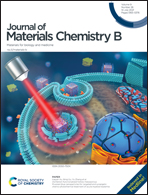An insight into the mechanism of antibacterial activity by magnesium oxide nanoparticles†
Abstract
The exact mechanism behind the antibacterial efficacy of nanoparticles has remained unexplored to date. This study aims to shed light the mechanism adopted using magnesium oxide nanoparticles prepared in ethyl alcohol against gram-negative and gram-positive bacterial cells, and the generation of reactive oxygen species (ROS) is proposed to be the dominant mechanism. This paradigm is supported by the quantification of the hydroxyl radical and superoxide anions produced in the nanoparticle treated and untreated bacterial solutions, and by the reduction of the antibacterial efficiency after the addition of a radical scavenger. The production of free Mg2+ ions from the nanoparticle is supposed to be the causative agent behind this uncontrolled ROS generation, resulting in excessive oxidative stress, which the antioxidants of the bacterial cells are unable to nullify, leading to cell damage. The amount of proteins, carbohydrates and lipids leaked due to the distortion of the cellular membrane is also quantified, and it is observed that their leakage trend varies on the structure of the bacterial cell. FESEM images taken at certain time intervals show the gradual internalization of the nanoparticles, and increasing rupture of bacterial cell membranes, leading to cell necrosis.



 Please wait while we load your content...
Please wait while we load your content...